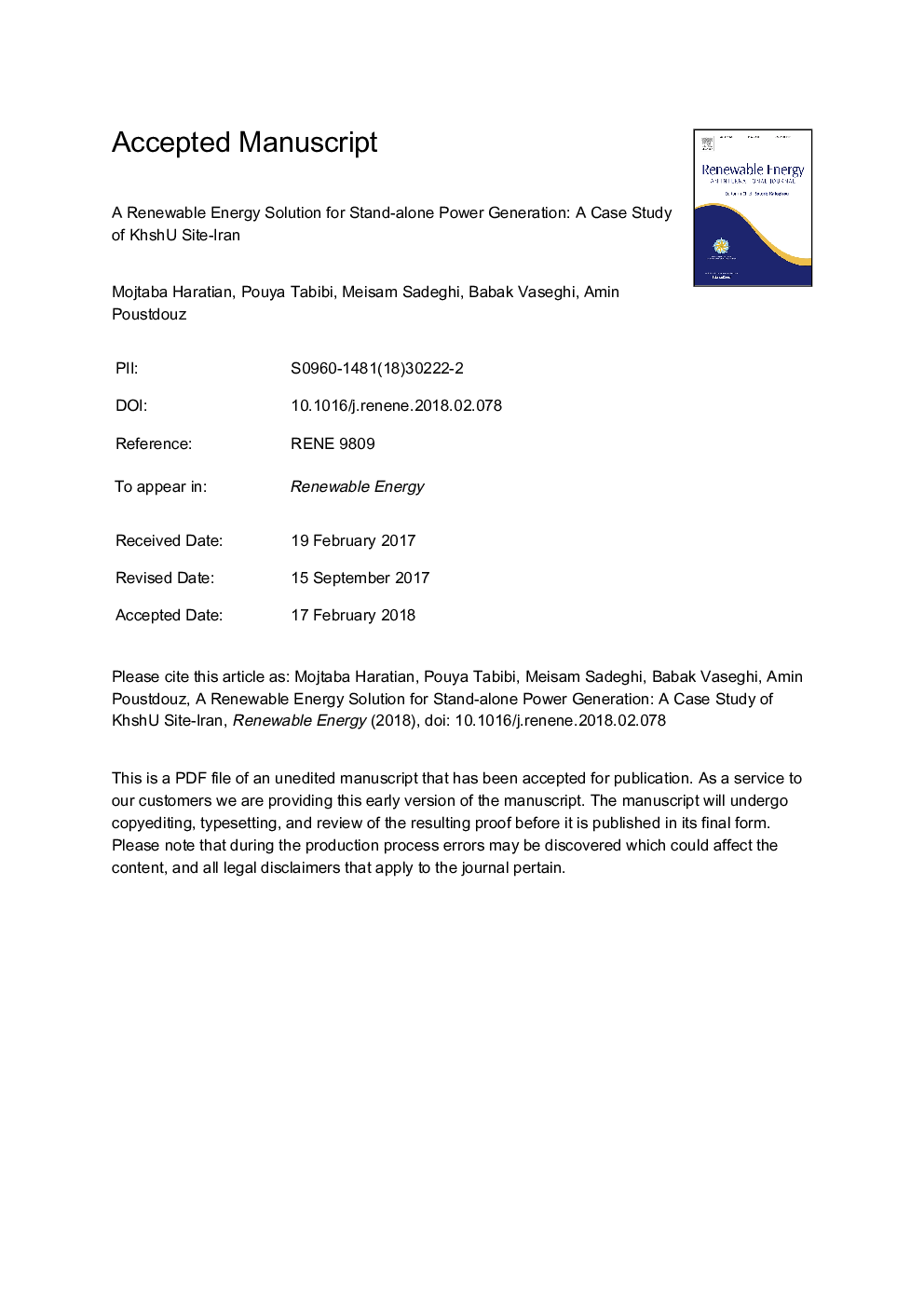| Article ID | Journal | Published Year | Pages | File Type |
|---|---|---|---|---|
| 6764471 | Renewable Energy | 2018 | 22 Pages |
Abstract
In order to offer cost-effective options to supersede fossil fuel resources, we developed a research methodology based on techno-economic feasibility analysis. The purpose of this paper is to find off-grid renewable energy solutions, including solar panel, wind turbine and batteries as possible options for zero-emission stand-alone power generation in KhshU Site, a renewable energy laboratory in Iran. The HOMER software, which determines the most cost effective system for a given load by considering incident solar radiation, wind speed, electrical demand profile, and equipment characteristics, was employed. The results revealed that the most economical configuration among different renewable energy systems (RES's) was the PV-battery, which has a total net present cost (NPC) of 8173 US$ and a cost of energy (COE) of 0.546 $/kWh, followed by the hybrid PV/wind/battery. Sensitivity analysis demonstrated that raising discount rates could increase the cost of energy while net present cost of the entire system would be reduced in any inflation rate. The analysis also showed that the wind speed variation between 3 and 6â¯m/s didn't have a considerable effect on NPC and COE.
Related Topics
Physical Sciences and Engineering
Energy
Renewable Energy, Sustainability and the Environment
Authors
Mojtaba Haratian, Pouya Tabibi, Meisam Sadeghi, Babak Vaseghi, Amin Poustdouz,
